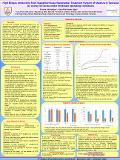| dc.description.abstract | The study aims to improve the Biogas production from the slaughterhouse wastewater treatment plant of Mwanza by anaerobic co-digestion using rice straw as co-substrate. The experiment was carried out in batch mode with different carbon / nitrogen ratios ( C / N ratio = 20: 1, 25:1, 30:1) at room temperature (20°C - 26. 4°C ). The Biogas analyzer, 5000 Geoth was used to analyze the composition of Biogas. The highest yield of methane-rich Biogas was obtained with a carbon/nitrogen ratio of 20:1. The Biogas yield has reached six times the amount released from the digestion of slaughterhouse wastewater without rice straw. Moreover, the addition of rice straw has shown great potential for the good treatment of slaughterhouse wastewater. Chemical Oxygen demand ( COD) was removed up to 75% at C/N ratio 20:1 while it was removed up 25% just for the digestion of slaughterhouse wastewater without rice straw addition. The results indicate that rice straw is a good co-substrate to get the appropriate carbon/nitrogen ratio (C/N ratio 20:1) for the performance optimization of the slaughterhouse wastewater treatment system of Mwanza in biogas production. Practically, it is recommended to use 51.2 kg of rice straw for 1m3 of slaughterhouse wastewater for stable digestion to proceed and improve the biogas yield six times more under moderates operating conditions. | en |

